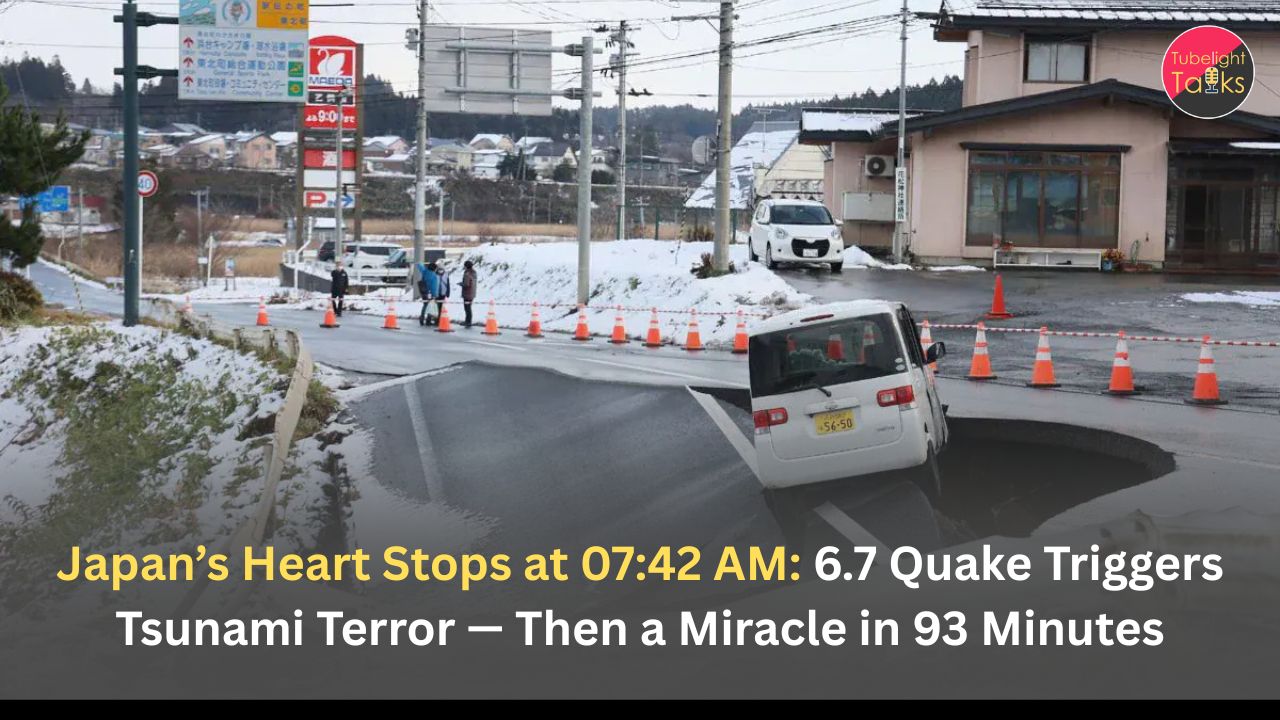Chandrayaan-4 Mission Updates: India is poised to make another giant leap in its space exploration journey with Chandrayaan-4, an upcoming mission by ISRO that aims not just to land on the Moon, but to bring back lunar samples to Earth. This mission marks a bold step in India’s lunar ambitions, building on the success of Chandrayaan-3 and preparing the ground for future human missions.
With complex technology like docking, ascent from the Moon, and a re-entry capsule, Chandrayaan-4 is expected to test critical systems that will enable India’s long-term vision of sending astronauts to the Moon. In this article, we dive deep into the mission details, technical challenges, timelines, scientific goals, and why this mission matters for both space science and India’s strategic space future.
What is Chandrayaan-4?
Chandrayaan-4 is a lunar sample-return mission. Unlike previous Chandrayaan missions, which focused on orbiting the Moon (Chandrayaan-1) or soft-landing and doing surface science (Chandrayaan-2 and -3), Chandrayaan-4 aims to collect up to ~3 kg of soil and rock (regolith) from the Moon and return that material to Earth for detailed analysis.
This is a highly complex mission, involving multiple modules, orbital docking, ascent from lunar surface, and an earth re-entry vehicle — capabilities that India is gradually building.
Why Chandrayaan-4 Matters
Scientific Importance
Sample Return: Bringing back lunar samples allows scientists to use advanced Earth-based labs to study minerals, isotopic compositions, and the Moon’s geological history in more depth than what in-situ instruments allow.
New Insights: The samples could shed light on the Moon’s formation, the presence of water or volatile compounds, and the effects of solar radiation over eons.
Technological Leap
Docking Capability: Chandrayaan-4 is expected to involve docking modules in lunar orbit — a first for India, with demos via the upcoming SPADEX mission.
Ascent Module: A module must take off from the Moon after collecting samples and meet with another module in orbit.
Re-entry Vehicle: After transfer, the sample container will re-enter Earth’s atmosphere safely.
Strategic and Long-Term Goals
Crewed Moon Mission: Chandrayaan-4 is a stepping stone for future manned lunar missions, potentially by 2040, as per ISRO’s roadmap.
Indigenous Capability: It will further India’s mastery over critical space operations — landing, takeoff, docking, reentry — all using largely indigenously developed systems.
Mission Architecture & Design
Modules and Launch Strategy
Five Modules: The mission design involves five separate modules: a propulsion module (PM), a transfer module (TM), a re-entry module (RM), a lander module (LM), and an ascender module (AM).
Two Launches: ISRO will launch in two parts — using LVM-3 rockets — to send different modules into orbit (first: LM + AM; second: TM + RM + PM).
Orbital Docking: After the two launches, the mission will involve multiple docking maneuvers: a key docking in Earth orbit to assemble the full spacecraft from the separate module stacks, followed by transit to the Moon. There, after sample collection, a second critical docking will occur in lunar orbit between the ascender module and the transfer module for secure sample handover to the re-entry vehicle.
Sample Collection & Return
The lander module will touch down on the lunar surface near Shiv Shakti Point (Chandrayaan-3’s site) and deploy a robotic arm or drill to collect regolith.
- The collected samples will be placed in the ascender module, which will lift off from the Moon.
- The ascender module will dock with the transfer module in lunar orbit.
- Samples will then be transferred into the re-entry module, which will head back to Earth for a controlled re-entry.
Timeline & Current Status
Design Phase: As of November 2025, the design of Chandrayaan-4 is nearing completion.
Government Approval: The mission received approval from the Union Cabinet on September 18, 2024, with a budget of ~₹2,104.06 crore
Launch Date: Earlier projections were for 2027; the latest ISRO statements confirm a target of 2028.
Demonstration Technologies: Docking capabilities will be first tested in the SPADEX mission, slated for late 2025.
Challenges & Risks
Complex Docking: Orbital rendezvous and docking in Moon orbit is a technically demanding task, especially for a country that has not done it before.
Ascent from Moon: Lifting off from the lunar surface with collected samples in the ascender module is riskier than just soft landing.
Re-entry Risks: The re-entry capsule must survive harsh re-entry conditions and ensure safe delivery of samples.
Funding & Schedule Delays: Large missions often face delays; also, the multi-launch strategy needs synchronization, increasing mission risk.
Scientific & Strategic Benefits
Geological Research: Returned samples will be invaluable to Indian and global lunar scientists; they can be studied with high-precision lab instruments, providing insights into Moon’s composition, age, and history.
Technology Validation: Successful demonstration of docking, ascent, and re-entry technology will be foundational for future crewed lunar missions.
International Prestige: By executing a sample-return mission, India can join a very exclusive group of nations (US, Russia, China) that have done so — boosting its prestige in global space exploration.
Industrial Growth: The mission engages private industry, academia, and research institutions, strengthening India’s space ecosystem.
Sustainable Exploration: The mission could reinforce India’s long-term lunar ambitions, including building infrastructure like lunar stations, and therefore contribute to more sustainable space exploration.
How Chandrayaan-4 Fits into India’s Broader Space Vision
Path to Human Moon Mission: Chandrayaan-4 is directly linked to ISRO’s plan to land astronauts on the Moon — slated for around 2040, per public statements.
Capability Building: Each Chandrayaan mission adds new technologies. Chandrayaan-2 and -3 built India’s soft-landing & surface exploration expertise; Chandrayaan-4 will build docking and reentry.
Sustainable Growth: By mastering sample-return missions, India strengthens its role not just as a launcher, but as a meaningful player in lunar science.
Space Economy: Successful missions like these can spur investments, partnerships, and a vibrant space industry in India, aligning with ISRO’s broader vision of scaling up spacecraft production.
Chandrayaan-4 and the Values of Humility and Service Taught by Sant Rampal Ji Maharaj
Sant Rampal Ji Maharaj’s teachings emphasize humility, perseverance, and selfless service. The Chandrayaan-4 mission reflects these values in many ways: the scientists and engineers working behind the scenes, iterating on complex technology, staying committed even when success isn’t guaranteed — these mirror the spiritual path.
Maharaj Ji teaches: True success is not in the applause, but in sincerity and dedication to a higher purpose.Just as ISRO’s team dedicates years to build something for the benefit of science and humanity (not for ego), Satgyaan (the wisdom) inspires us to harness our skills for greater good, transcending personal ambition.
Also Read: Gaganyaan’s 2026 Unmanned Flights: How India Prepared for Sending Humans to Space
FAQs:Chandrayaan-4 Mission Updates: India’s Next Lunar Exploration Milestone
Q1: What is the main objective of Chandrayaan-4?
To land on the Moon near Shiv Shakti Point, collect ~3 kg of lunar soil and rock samples, and return them safely to Earth.
Q2: When is Chandrayaan-4 expected to launch?
Current estimates place the launch around 2028, following earlier 2027 projections.
Q3: Why does Chandrayaan-4 need multiple modules?
Because of its complexity: modules for landing, ascent, sample transfer, re-entry, and propulsion are required — they must dock, separate, and reunite in orbit.
Q4: Is India the only country doing a sample-return mission?
No — but sample-return missions are very few; only the US, Russia, and China have succeeded. Chandrayaan-4 would make India part of this elite group.
Q5: How will the samples survive the trip back to Earth?
They’ll be vacuum-sealed in a re-entry module, protected during re-entry through heat shields and deceleration systems, and eventually recovered on Earth.










